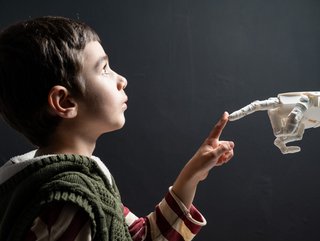The impact of artificial intelligence on kids and teens

The youth of today are growing up surrounded by artificial intelligence (AI). Their values, ways of thinking, and moral codes are all shaped not only by their parents or immediate caregivers but also by the technology that is ever-present in their daily lives. This article will dive into the impacts of AI and how these can shape the future of the youth today.
The Presence of AI in Society
When talking about AI, simply put – it is everywhere. AI is not just about robots or self-navigating vehicles. It is on the internet, on social media, and on smart devices or personal assistants such as Siri and Alexa.
One of the most common misconceptions about AI is the danger that it can impose. After all, when talking about humans relying on technology, there have been too many movies that show how that could go wrong. But, in the modern world, AI can become an essential piece of technology that can help society progress – as long as it is made for this purpose.
AI is well-used by both the older and younger generation. It has a role in shaping business processes, managing marketing campaigns, and most commonly, recommending the best articles or videos to enjoy while browsing social media.
AI for the Youth
Today’s youth – more popularly known as the Gen Z and Generation Alpha – have grown up with technology. Chances are, they have no idea what a beeper or a typewriter is. They are surrounded by AI even though they may not know what it is.
Adults use different gadgets and devices for managing their daily schedules and responsibilities. It is thus not surprising that the youth also know – or expect to know – how to use these devices. The widespread use of smartphones, tablets, and personal computers has helped kids and teens to familiarise themselves with technology, and more specifically with AI.
The most common type of artificial intelligence present today is what experts call weak AI. This is the AI found in algorithms used to predict responses. The best example of these algorithms is found in social media websites that recommend ads or videos specific to the user’s interests.
Thus, when a kid or teen is busy searching for cute dog videos, the AI algorithm works to recommend more of these videos to watch next. Aside from social media, AI can be found in smart home systems with the use of Alexa or Siri.
Give a voice command, and the AI processes the command to follow it. Ask a question, and the AI answers based on patterns and data gathered from its use.
Positive Impacts of AI
Artificial intelligence for the youth is best used in an educational setup. Many schools have already started to introduce several technological innovations with the use of AI.
In the classroom, AI can help develop individualised learning tools that can help the student progress better. With the use of this technology, educational centres can also provide better services to each student, making sure that no one is left behind.
Outside of the classroom, virtual summer camps are becoming increasingly popular with the help of AI. Kids and teens can enjoy several activities throughout their summer break. These camps cater to a wide range of interests from arts and music to STEM and robotics.
Another positive impact of AI benefits both the parent and the child. Artificial intelligence can be used to develop a proper assessment for kids with special needs.
Expensive consultations and diagnoses can become a thing of the past, as AI can provide a more cost-effective yet efficient way to properly diagnose a learning disability. An early diagnosis will help the child learn to manage the disability and go on to lead a productive life as an adult.
Protecting the Youth from the Negative Impacts of AI
As mentioned earlier, AI is ever-present in the lives of the youth although they may not be aware of it. AI works by gathering data, and every like, click, or share adds to the digital footprint of a kid using this technology.
To protect the safety and welfare of the youth, it is important to monitor their use of technology from an early age. The most helpful way to do this is to educate them on the proper ways of using technology.
The child should understand that their sensitive data can be used by ill-meaning AI developers. Remember that kids have a mind of their own, so teaching them the dos and don’ts when using AI will help safeguard their security.
Final Word
Artificial intelligence has many uses. Since it is man-made, AI can be used for good or bad intentions. As AI is highly adaptable to any setting, the younger generation can enjoy it for educational and entertainment purposes.
It should be noted that kids and teens can easily become susceptible to the harmful use of their data. Monitoring their usage and educating them on the proper ways to use AI is the best way to prevent any negative impacts of the technology.






